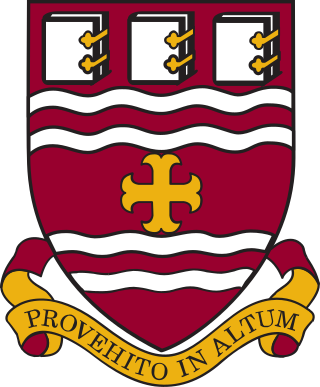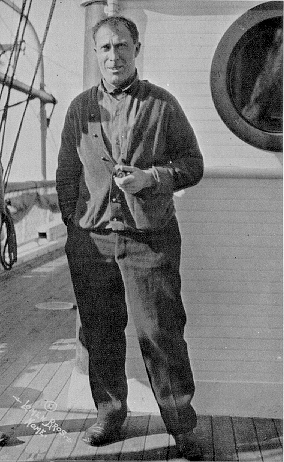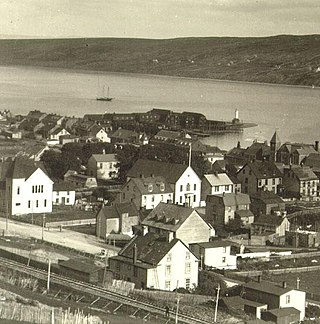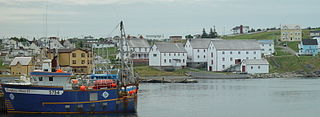
Memorial University of Newfoundland, also known as Memorial University or MUN, is a public research university in the province of Newfoundland and Labrador, based in St. John's, with satellite campuses in Corner Brook, elsewhere in Newfoundland and in Labrador, Saint Pierre, and Harlow, England. Memorial University offers certificate, diploma, undergraduate, graduate, and post-graduate programs, as well as online courses and degrees.

Ferryland is a town in Newfoundland and Labrador on the Avalon Peninsula. According to the 2021 Statistics Canada census, its population is 371.

The Province of Avalon was the area around the English settlement of Ferryland in what is now Newfoundland and Labrador, Canada in the 17th century, which upon the success of the colony grew to include the land held by Sir William Vaughan and all the land that lay between Ferryland and Petty Harbour.

Cape Spear is a headland located on the Avalon Peninsula of Newfoundland near St. John's in the Canadian province of Newfoundland and Labrador. At a longitude of 52°37' W, it is the easternmost point in Canada and North America, excluding Greenland.
Caitlin Maura Hanrahan is a Canadian author and academic.

Robert Abram Bartlett was a Newfoundland-born American Arctic explorer of the late 19th and early 20th centuries.

Harbour Grace is a town in Conception Bay on the Avalon Peninsula in the province of Newfoundland and Labrador, Canada. With roots dating back to the 16th century, it is one of the oldest towns in North America.

Effie M. Morrissey is a schooner skippered by Robert Bartlett that made many scientific expeditions to the Arctic, sponsored by American museums, the Explorers Club and the National Geographic Society. She also helped survey the Arctic for the United States Government during World War II. She is currently designated by the United States Department of the Interior as a National Historic Landmark as part of the New Bedford Whaling National Historical Park. She is the State Ship of Massachusetts.
Brigus is a small fishing community located in Conception Bay, Newfoundland and Labrador, Canada. Brigus was home to Captain Bob Bartlett and the location of his residence Hawthorne Cottage.

Quidi Vidi is a neighbourhood in St. John's, Newfoundland and Labrador. Its pronunciations vary, even amongst longtime residents, but "Kiddy Vidi" is the most common. One theory behind the name is that it was named after a beloved cat named Vidi. The village is adjacent to Quidi Vidi Lake. Quidi Vidi's harbour is known as "The Gut". Located in Quidi Vidi is the Quidi Vidi Battery Provincial Historic Site. The village is home to several small businesses.
The architecture of St. John's, in Newfoundland and Labrador, Canada, has a style distinct from that of the rest of Canada, and its major buildings are remnants of its history and prestige as the first British colonial capital. The city of St. John's has had a long history, with inhabitation dating to the 16th century onwards. As the city grew, so, too, did the landscape. Buildings took a variety of styles according to the styles and means available to build the structures. Starting as a fishing outpost for European fishermen, St. John's consisted mostly of the homes of fishermen, sheds, storage shacks, and wharves. Of course, these structures were small and constructed out of wood. Like many other cities of the time, as the Industrial Revolution took hold and new methods and materials for construction were introduced, the landscape changed as the city grew in width and height. The Great Fire of 1892 destroyed most of the downtown core, and most residential and other wood-frame buildings date from this period. Often compared to San Francisco because of its hilly terrain and steep maze of residential streets, housing in St. John's is typically painted in bright colours, unlike most other parts of Canada.
Brigus Junction is a designated place in the Canadian province of Newfoundland and Labrador.

Newfoundland is a large island within the Canadian province of Newfoundland and Labrador. It is situated off the eastern coast of the North American mainland and the geographical region of Labrador.

The Ryan Premises is a National Historic Site of Canada located in the town of Bonavista, Newfoundland and Labrador. It is preserved as an example of a large-scale merchant operation in a Newfoundland outport.
John Leamon was an English-born merchant and politician in Newfoundland. He represented Port de Grave in the Newfoundland House of Assembly from 1859 to 1866 as a Conservative.
Jabez Pike Thompson, was a newspaper publisher, magistrate and politician in Newfoundland. He represented Twillingate and Fogo from 1882 to 1885 and Twillingate from 1889 to 1895 in the Newfoundland House of Assembly.

Kent Cottage is a historic dwelling in Brigus, Newfoundland, now used for artist-in-residence and writer-in-residence programs. The surrounding property is known as Landfall.
Division No. 1, Subdivision L is an unorganized subdivision on the Avalon Peninsula in Newfoundland and Labrador, Canada. It is in Division 1 and contains the unincorporated communities of Bareneed, Black Duck Pond, Blow Me Down, Coley's Point South, Hibb's Cove, Pick Eyes, Port de Grave, Ship Cove and The Dock

Mallard Cottage is a heritage-designated building located within Quidi Vidi Village in the City of St.John's, Newfoundland and Labrador. The cottage is a one-and-a-half-stories with a hipped roof and central chimney. The architecture is an example of early 19th century vernacular style patterned on Irish thatched-roofed cottages. Though the exact date of construction cannot be confirmed, based on evidence from construction techniques, architectural style, and oral history the date for its construction are placed between 1820 and 1840, making it one of the oldest residential structures in St. John's. Two other buildings in St.John's of the same style are Anderson House, built 1804–1805, and Martin McNamara House, exact construction date unknown. These three structures are the best preserved examples of late 18th and early 19th century architecture in St.John's.














